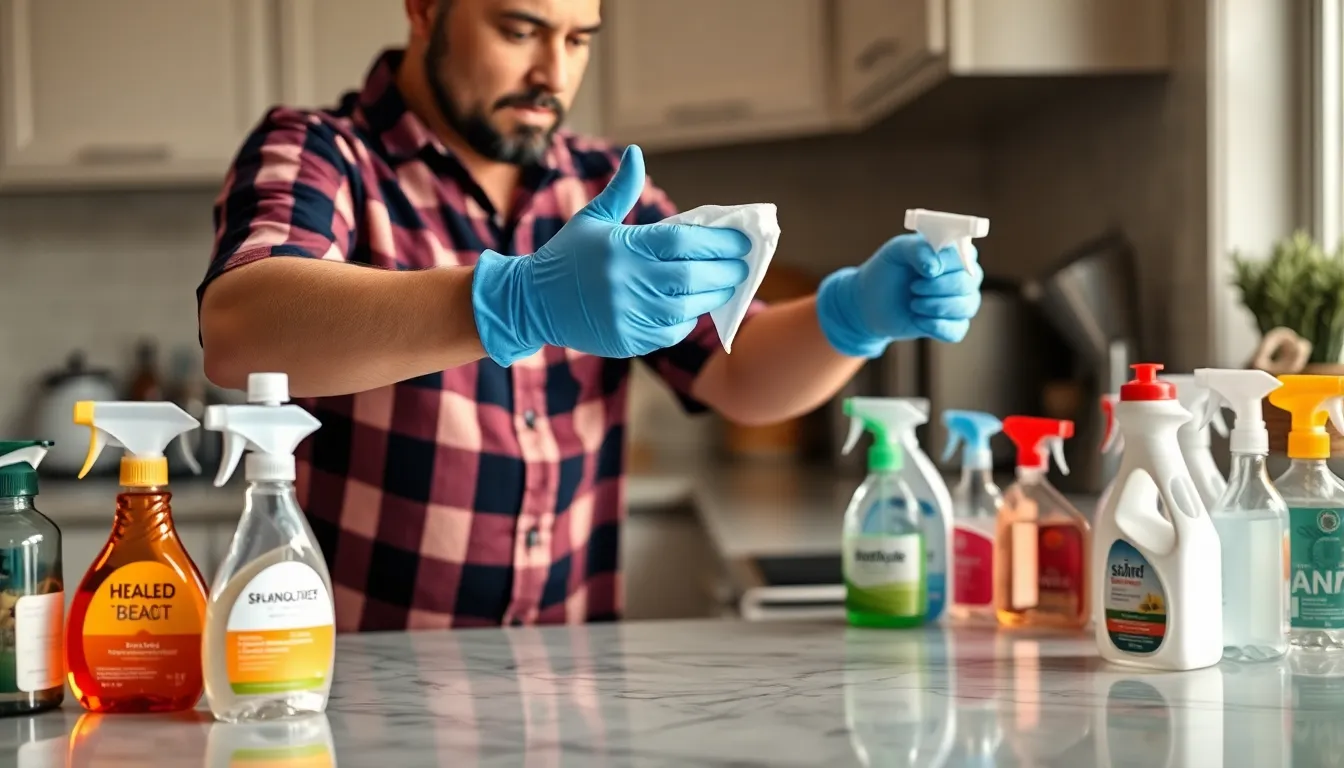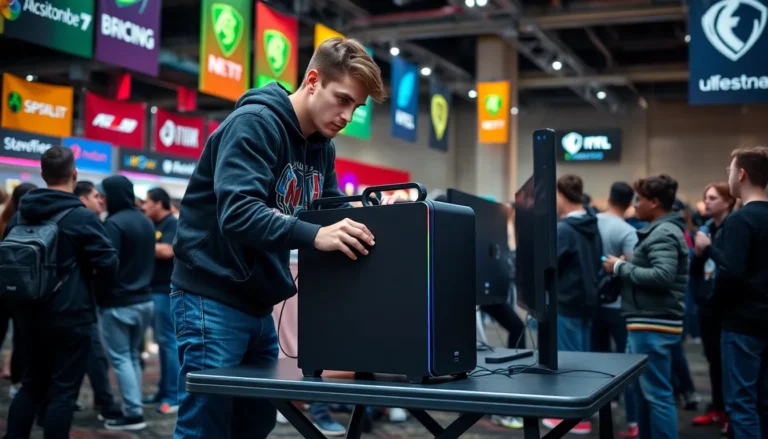Table of Contents
ToggleIn a world where germs seem to have their own social lives, keeping a clean home feels like an Olympic sport. Every corner, every surface, and yes—even that mysterious spot behind the couch—needs a little TLC. Home sanitization isn’t just about wiping down surfaces; it’s about creating a fortress against those pesky pathogens that love to crash your cozy abode.
Understanding Home Sanitization
Home sanitization encompasses practices that significantly reduce the presence of harmful pathogens in residential spaces. It involves specialized processes that go beyond basic cleaning, aiming to create healthier living environments.
What Is Home Sanitization?
Home sanitization refers to measures that kill or reduce bacteria, viruses, and other microorganisms on surfaces. This process often utilizes EPA-approved products or methods to ensure effectiveness. It encompasses thorough cleaning of high-touch areas such as doorknobs, light switches, and countertops. Understanding sanitization techniques promotes better hygiene and protects residents from potential health risks.
Importance of Home Sanitization
Home sanitization plays a critical role in preventing the spread of infectious diseases. Research shows that sanitized spaces lower the risk of illness, especially in households with children or the elderly. Regular sanitization minimizes allergens and harmful bacteria that contribute to respiratory issues. Many experts recommend implementing a consistent sanitization routine to maintain optimal health and well-being. Prioritizing this practice ensures a safer living environment for everyone.
Methods of Home Sanitization

Home sanitization involves various strategies aimed at enhancing cleanliness and safety within the living space. Adopting effective methods ensures a healthier environment for everyone.
Cleaning vs. Sanitizing
Cleaning removes dirt and debris from surfaces, while sanitizing specifically targets harmful microorganisms. It’s not enough to just clean; sanitizing ensures that bacteria and viruses are significantly reduced. Many surfaces require both steps for optimal health protection. While cleaning might involve soaps and detergents, sanitizing uses EPA-approved products to kill germs. Homeowners shouldn’t overlook high-touch areas like doorknobs and light switches, as they are often hotspots for pathogens.
Common Sanitization Products
Household sanitization products include various options designed to eliminate harmful germs. Disinfectant wipes offer convenience for quick cleaning tasks, while sprays provide broader coverage on larger surfaces. Bleach solutions are powerful against viruses, but proper dilution is essential for safety. Alcohol-based disinfectants also serve as effective alternatives, especially in areas where soap and water aren’t accessible. Homeowners can find hand sanitizers, which are crucial for personal hygiene, particularly in shared spaces. Regular use of these products plays a significant role in maintaining a safer environment.
Best Practices for Home Sanitization
Home sanitization requires consistent efforts to ensure a clean environment. Following effective practices enhances safety and well-being.
Regular Cleaning Schedule
Establishing a regular cleaning schedule boosts sanitation efforts. He or she can choose a daily, weekly, or monthly plan based on household needs. Daily tasks may include wiping down counters and sanitizing frequently used items. Weekly cleaning provides a deeper focus on areas like bathrooms and kitchens. Monthly efforts can encompass thorough cleaning of floors and windows. Having a checklist can simplify this process, ensuring no task is overlooked. This routine helps maintain a consistently healthy living space.
Focus on High-Touch Areas
High-touch areas demand special attention during sanitization. These include doorknobs, light switches, and remote controls. Cleaning these spots frequently minimizes the risk of germ transmission. Using EPA-approved disinfectants on these surfaces is essential. He or she should prioritize sanitizing areas that family members often contact. Incorporating this practice into daily routines greatly reduces the presence of harmful pathogens. Appliances like microwaves and refrigerators also require regular disinfecting. Maintaining vigilance in these areas ensures a safer and healthier home environment.
Challenges in Home Sanitization
Home sanitization presents various challenges that require careful attention. Identifying these obstacles aids in maintaining a germ-free environment.
Common Mistakes to Avoid
Neglecting to read product labels can lead to ineffective sanitization. Relying solely on one cleaning product may not address all surfaces or pathogens effectively. Skipping high-touch areas is a critical oversight, as these spots harbor the most germs. Overlooking the importance of proper application techniques can also diminish disinfectant efficacy. Ignoring the recommended contact time, which ensures that products kill germs effectively, poses a significant risk. Consistently assuming that visible cleanliness equates to sanitization may create false security. Recognizing these common mistakes can enhance the overall sanitization process.
Dealing with Allergens and Pathogens
Managing allergens poses distinct challenges in home sanitization. Dust mites, pet dander, and mold spores frequently circulate in indoor air, aggravating allergies. Employing air purifiers and HEPA filters significantly reduces airborne allergens. It’s essential to vacuum regularly with a vacuum designed to trap allergens. Treating surfaces with appropriate cleaning agents helps minimize the presence of harmful pathogens. Focusing on moisture control lowers the risk of mold growth, which thrives in damp environments. Combining these strategies creates a healthier living space, essential for individuals, especially those with sensitivities.
Maintaining a sanitized home is essential for promoting health and well-being. By prioritizing regular sanitization practices and focusing on high-touch areas individuals can significantly reduce the risk of harmful pathogens.
Incorporating effective cleaning routines tailored to specific needs ensures a safer environment for everyone. Awareness of common pitfalls and the importance of using EPA-approved products can further enhance these efforts.
With consistent attention to home sanitization families can create a healthier living space that protects against the spread of infectious diseases and allergens. A clean home isn’t just about aesthetics; it’s about fostering a safe haven for all residents.







